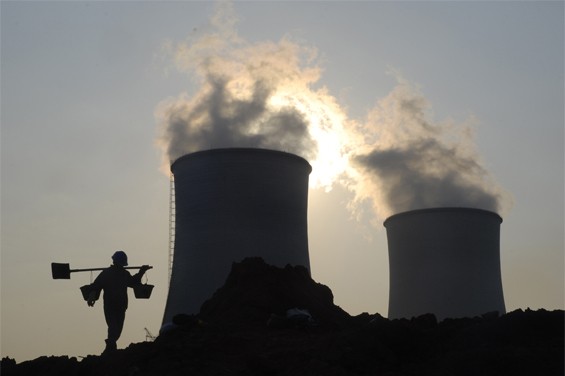China's State Council on Wednesday unveiled the country's energy targets for 2014 through 2020, which included setting a cap on annual primary energy consumption at 4.8 billion tonnes of the standard coal equivalent, according to Xinhua.
Under the country's Energy Development Strategy Action Plan (2014-2020), annual coal consumption will be held below 4.2 billion tonnes until 2020, which is 16.3 percent more than the 3.6 billion tonnes burned in 2013, according to statistics from the National Coal Association.
To reduce reliance on coal, the government has set a goal of raising the percentage of the total energy mix supplied by clean energy to 15 percent by 2020, as against the current share of less than 10 percent.
The plan also stipulates that the share of non-fossil fuels in the total primary energy mix will rise to 15 percent by 2020, as against last year's 9.8 percent. By 2020, China is aiming to have 10 percent of its energy supplied from natural gas while it lowers the overall share of coal to 62 percent from the 66 percent at present.
Toward this end, the State Council calls for the establishment of eight new natural gas production bases by 2020, each capable of producing 10 billion cubic meters of gas per year. Aside from conventional natural gas extraction, it is also calling for the production of 30 billion cubic meters each of shale gas and coal-bed methane per year by 2020.
To further cut its dependence on coal-supplied power, the state will be expanding its nuclear energy production with the construction of new nuclear plants in its eastern coastal regions. By 2020, it will have 58 gigawatts in nuclear power capacity completed, with another 30 gigawatts in capacity then already under construction.
To reduce reliance on foreign suppliers, China, which presently imports almost 60 percent of its oil and over 30 percent of its natural gas requirements from abroad, is also encouraging a more diversified energy mix.
By 2020, the plan stipulates that installed capacity of hydro, wind and solar power should already stand at 350 gigawatts, 200 gigawatts and 100 gigawatts, respectively.
China is aiming to raise its overall energy self-sufficiency to around 85 percent by 2020.



























